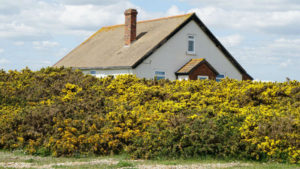Throughout the life of your chimney, you might experience unexpected masonry problems, and it’s not only a winter problem. Masonry problems happen year-round and it worsens during winter due to a freeze/thaw cycle.
Water Damage
When water penetrates the masonry, it is at risk of freezing when the chimney cools. When it freezes, the water expands, causing further damage in the masonry. When the chimney warms up while a fire is burning, the water melts and moves further into the damaged masonry. It repeats this process throughout winter, causing catastrophic damage to the masonry, and to the inside of the system. This freeze/thaw cycle can cause damage to the crown, the firebox, and more.
Winter Damage
The most common masonry damage that homeowners find after a long burn season is spalling mortar and bricks. This is the term used when mortar becomes cracked and falls apart, resulting in falling mortar and unsupported bricks. Many homeowners won’t notice this type of masonry problem until there are mortar and brick pieces lying in the yard and strewn across the roof. This type of damage not only allows more water into the system, but is also dangerous to people who might be in the yard.
Chimney Crown Damage
The chimney crown is the concrete ceiling that covers the top of the chimney opening. If a crown is not maintained properly through waterproofing and minor repairs, it can allow water into the chimney system. Even a well-constructed crown needs attention eventually, but a crown that isn’t made out of proper materials, or made correctly will deteriorate quickly and not do its job. The crown should be constructed of concrete and reinforced with steel mesh, should be a slanted so that water runs off, and should be 3 inches thick at its thinnest point. The crown should also hang over the edge at least two inches so that water runs off the chimney top instead of down the masonry. An amateur might use a flat crown, may not make it thick enough, and many even use leftover mortar instead of concrete. Mortar is not fit to withstand the time, weather, and temperatures that concrete can. It’s important to hire a trained and experienced professional that will provide quality services that last.
Firebox Damage
The firebox is where the fire burns. It endures the most abuse (high temperatures, direct heat) and sees the least attention. The concentrated heat, sometimes every day through the winter, takes a toll on the firebox. The damage can include flaking, cracking, and deterioration of the masonry. This type of damage can happen over time, but like the crown, it will reoccur and be worse if it wasn’t constructed properly in the first place. The firebox should be made up of firebricks and refractory mortar. These materials are made to withstand high temperatures, and only a firebox equipped with refractory materials are “up to code” and safe for use.
Masonry Repairs
If you see cracking, flaking, or falling masonry on your chimney, inside your fireplace, or suspect a masonry problem, call a professional right away for an inspection. Damaged masonry puts your family and your home in danger, but can be repaired easily when caught early. Chesapeake Chimney & Co. offers chimney and masonry repairs year-round for your safety and convenience.
Call today at 410-535-0052.

Recent Comments